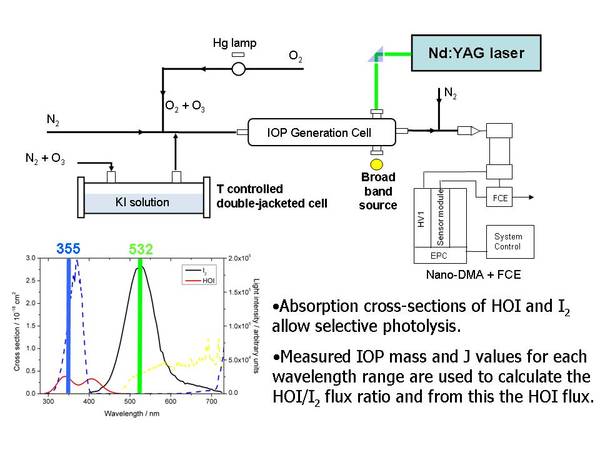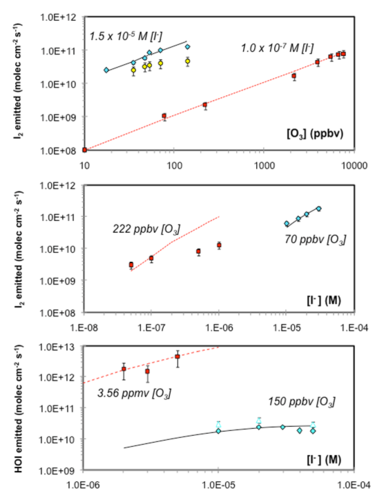Iodine Gas-to-Particle Conversion
Lower Atmosphere - Laboratory
Laboratory characterisation of inorganic iodine emissions from the sea surface: dependence on oceanic variables and parameterisation for global modelling
2011-2013
Reactive iodine compounds (IOx = I + IO) play a significant role in the chemistry of the marine boundary layer, by causing ozone destruction and changing the HOx and NOx partitioning, and can also contribute to new particle formation. The HOI and I2 fluxes produced from iodide solutions after reaction with O3 were measured by using the iodine oxide particle size distributions obtained from a differential mobility analyser. The effect of a number of relevant parameters including water temperature, salinity and organic compound concentration on the HOI and I2 fluxes have been investigated. The results of these experiments and those reported previously (Carpenter et al., Nature Geosci., 2013) have been then used to produce parameterised expressions for the HOI and I2 fluxes (MacDonald et al., Atmos. Chem. Phys., 2014). The flux expressions have been input into the Tropospheric HAlogen chemistry MOdel (THAMO) to compare with MAX-DOAS measurements of IO.
 Experimental Setup
Experimental Setup
 Dependence of HOI and I2 fluxes on ozone and iodide concentrations
Dependence of HOI and I2 fluxes on ozone and iodide concentrations
